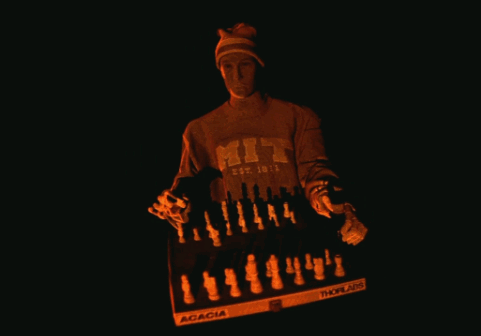Large amplitude wavelength modulation spectroscopy for sensitive measurements of broad absorbers
Greg B. Rieker and Torrey R. S. Hayden
Optics Express, Vol. 24, Issue 24, pp. 27910-27921 (2016).
Download here (open-access)
Prof. Greg Rieker and his student Torrey Hayden used Praevium’s 1550nm MEMS-VCSEL demo unit to acquire gas spectroscopy of carbon dioxide using Wavelength Modulated Spectroscopy (WMS). The WMS technique is higher sensitivity than direct detection due to the acquisition of a 2f signal rather than a simple 1f signal. This requires a laser that can be modulated at kHz speeds and over a wide range to encompass the spectral signal.
Abstract:

We demonstrate large amplitude wavelength modulation spectroscopy (WMS) with a MEMS-tunable vertical cavity surface-emitting laser (MEMS-VCSEL) to measure high-density gases. WMS enables sensitive measurements of gas phase thermodynamic properties in harsh environments, but has been limited to moderate pressure and density conditions because of the narrow tuning range of traditional DFB lasers.
The MEMS-tunable laser is able to rapidly modulate across the broadened features of high-density gas mixtures to produce the harmonic signals in the detected light intensity typical of WMS. We illustrate the technique on high-pressure mixtures of CO2 in air that are 2.5 times higher density than previously published WMS measurements (equivalent to greater than 255 atm at 1500 K). We develop a WMS model that accounts for nonlinear tuning of the laser to enable extraction of thermodynamic properties from measured data. The agreement of the measured data and model suggests that this technique could be used now for calibrated measurements of gas concentration, and in the future for calibration-free operation with further high-pressure absorption model development and laser tuning characterization.








